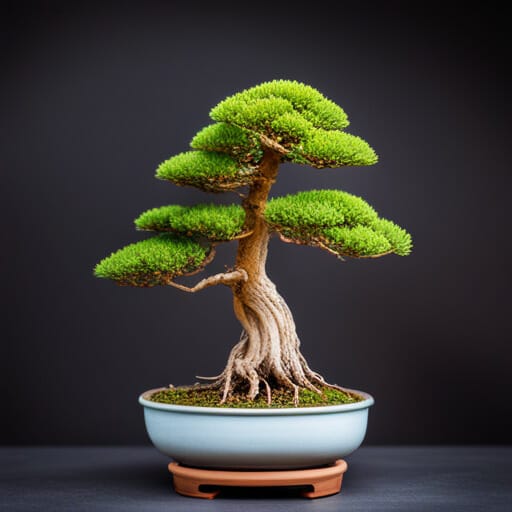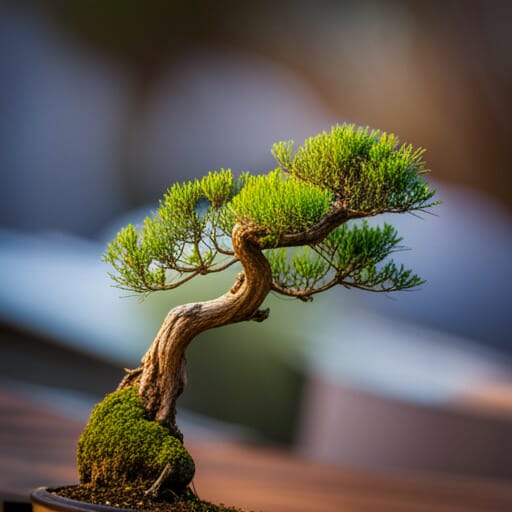Exploring Thuja: A Promising Bonsai Tree
In the world of bonsai, Thuja, an evergreen tree native to North America, holds great potential as a captivating addition to any collection. While traditionally grown for hedges, Thuja’s suitability for bonsai has been largely overlooked due to limited information and a scarcity of quality material. However, recent progressions in Thuja bonsai cultivation have revealed its unique characteristics and desirable attributes.
Resembling junipers with their scale-like foliage, Thuja trees offer the opportunity to create beautifully crafted foliage pads, a coveted feature in bonsai. With a vigorous growth rate, these trees respond exceptionally well to pruning and back budding. However, careful attention must be given to remove long, straight shoots with sparse foliage to maintain a smaller size.
Thuja trees are well-suited to bonsai styles reminiscent of pines, requiring wiring techniques to avoid a scruffy topiary appearance. Furthermore, the bark and deadwood of these trees contribute to their aesthetic appeal. In addition, the roots of Thuja are particularly suitable for bonsai cultivation.
As more information becomes available and enthusiasts discover the potential of Thuja as a bonsai tree, it is anticipated that its popularity will soar. This article aims to explore the characteristics and varieties of Thuja, provide growing and styling tips, and discuss its potential for widespread appreciation in the world of bonsai.
Contents
- 1 Quick Points
- 2 Characteristics and Varieties
- 3 Growing and Styling Tips
- 4 Potential for Popularity
- 5 Frequently Asked Questions
- 5.1 How long does it take for a Thuja tree to develop into a bonsai?
- 5.2 Can Thuja trees be grown indoors as bonsai?
- 5.3 Are Thuja trees susceptible to any specific pests or diseases?
- 5.4 What are some common mistakes to avoid when styling Thuja bonsai?
- 5.5 Are there any specific techniques or tools that are recommended for shaping Thuja bonsai?
Quick Points
- Thuja trees are not commonly seen in bonsai due to a lack of good material and limited information on how to handle them.
- Thuja trees are quite vigorous and their foliage can grow fast and become out of control, presenting a challenge for bonsai enthusiasts.
- Thuja trees can be developed as bonsai and respond well to pruning and back budding.
– Thuja trees have the potential to gain popularity in bonsai as more information becomes available.
Characteristics and Varieties

Thuja trees, specifically the varieties Thuja Occidentalis and Thuja Plicata, are not commonly used in bonsai due to the lack of available material and limited information on their handling, despite their potential for building foliage pads and responding well to pruning and back budding. These evergreen trees, native to North America, have characteristics that make them promising candidates for bonsai.
Thuja trees can grow quickly and their foliage can become large and droopy, which presents a challenge for bonsai enthusiasts. However, with proper care and maintenance, Thuja trees can be developed into beautiful bonsai specimens. They have excellent bark, which adds to their appeal, and deadwood works well on them, adding age and character. Thuja roots are also good for bonsai and can handle aggressive root pruning.
As more information becomes available, Thuja trees have the potential to gain popularity in the bonsai community.
Growing and Styling Tips

When considering the cultivation and shaping of this particular species, it is important to focus on techniques such as regular pruning and wiring to maintain a desired aesthetic.
For instance, a study conducted by bonsai enthusiasts found that by carefully removing long and straight shoots with sparse foliage on a mature specimen, the resulting smaller tree showcased a more refined and compact form. This highlights the significance of proactive maintenance and attention to detail when growing Thuja bonsai.
Additionally, the styling of Thuja trees depends on the trunk and the material being used, with styles similar to pines being particularly suitable. Wiring is necessary to prevent the trees from appearing unkempt, and the addition of deadwood can enhance the overall age and character of the bonsai.
Thuja roots are also well-suited for bonsai and can handle aggressive pruning, making them a resilient choice for enthusiasts.
Potential for Popularity

The potential for increased interest and adoption of this species in the art of bonsai is evident as more information and techniques become available to enthusiasts.
Thuja trees, although not commonly used in bonsai, have shown promising characteristics that make them a viable option for bonsai enthusiasts. Here are five reasons why Thuja trees have the potential to gain popularity in the bonsai community:
- Thuja trees have unique foliage that resembles scale-like leaves found in some junipers, allowing for the creation of foliage pads, which are desirable in bonsai.
- With their vigorous growth and ability to respond well to pruning and back budding, Thuja trees offer a great opportunity for styling and shaping.
- Thuja trees have excellent bark, which adds to their appeal as bonsai and can be enhanced with the addition of deadwood.
- The roots of Thuja trees are conducive to bonsai, as they root easily and can handle aggressive root pruning.
- Thuja trees are tough and do not require special care, making them suitable for beginners and those looking for low-maintenance bonsai options.
As more enthusiasts explore the potential of Thuja trees in bonsai and share their experiences and techniques, it is likely that these trees will become more popular in the bonsai community.
Frequently Asked Questions
How long does it take for a Thuja tree to develop into a bonsai?
The development timeline for a Thuja tree to become a bonsai varies depending on several factors, such as the starting material and the desired level of refinement. However, it generally takes several years of careful cultivation, training, and pruning to achieve a mature and aesthetically pleasing bonsai specimen.
Can Thuja trees be grown indoors as bonsai?
Thuja trees can be grown indoors as bonsai, but it is not ideal due to their natural growth patterns and requirements for sunlight. Thuja trees are best suited for outdoor cultivation where they can thrive and develop properly.
Are Thuja trees susceptible to any specific pests or diseases?
Thuja trees are not susceptible to any specific pests or diseases. However, like any plant, they may encounter common issues such as aphids, spider mites, or fungal infections. Regular monitoring and proper care can help prevent and address these problems.
What are some common mistakes to avoid when styling Thuja bonsai?
Some common mistakes to avoid when styling Thuja bonsai include allowing the foliage to grow out of control, neglecting to remove long and straight shoots, and not wiring the tree properly to prevent a scruffy appearance.
Are there any specific techniques or tools that are recommended for shaping Thuja bonsai?
Tools commonly used for shaping Thuja bonsai include concave cutters, knob cutters, wire cutters, branch benders, and bonsai wire. Techniques such as pruning, wiring, and bending branches are recommended for achieving desired shapes and creating a balanced bonsai tree.




